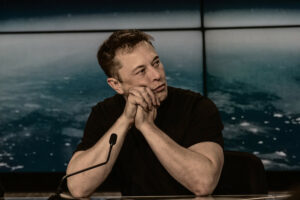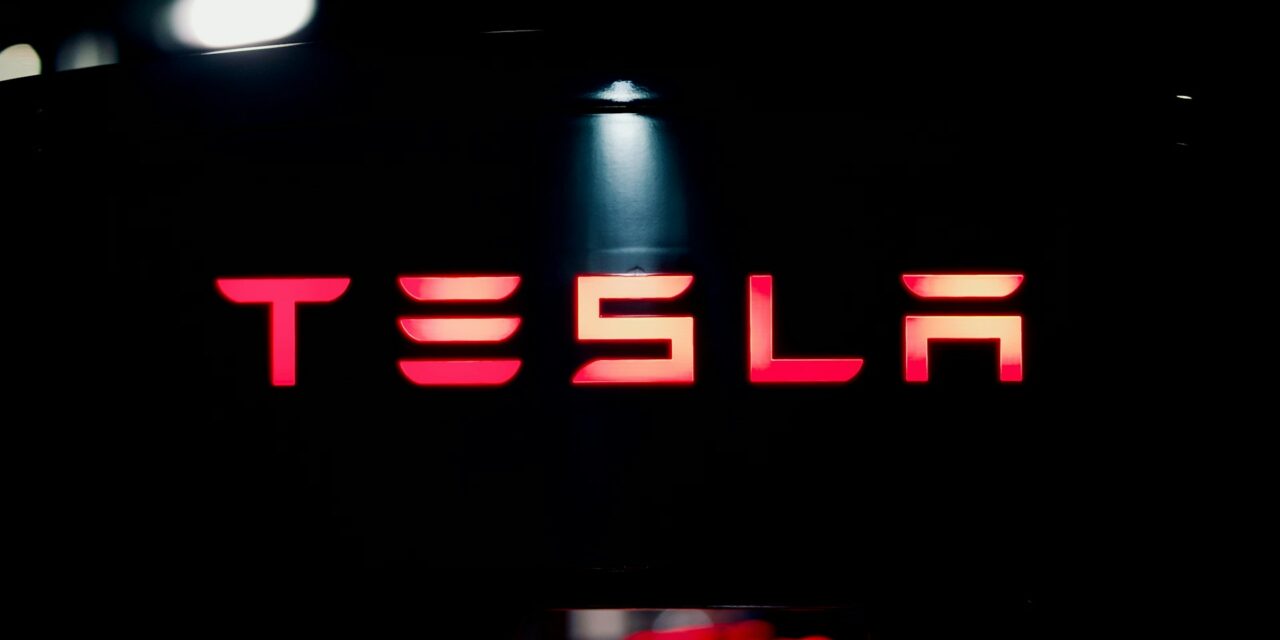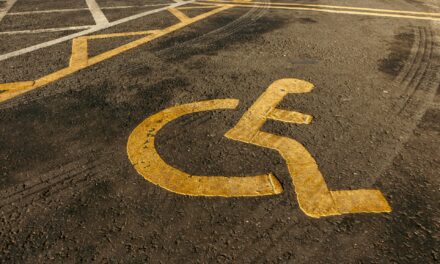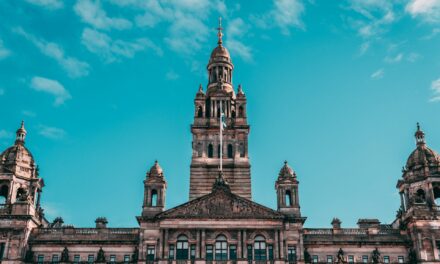- Key Takeaways
- Tesla’s Founding
- Early Development and Roadster
- Leadership Evolution
- Surviving Financial Challenges
- Business Strategy and Growth
- Technological Innovations
- Key Partnerships and Collaborations
- Legal Issues and Controversies
- Product and Sales Milestones
- Facilities and Locations
- Final Remarks
- Frequently Asked Questions
Tesla’s journey is a fascinating tale of innovation and disruption. From its early struggles to becoming a leader in electric vehicles, Tesla has reshaped the automotive industry. Founded in 2003 by engineers with a vision for sustainable energy, Tesla has grown rapidly, pushing boundaries in technology and design. The company’s commitment to renewable energy solutions extends beyond cars to solar products and energy storage.
Understanding the complete history of Tesla provides insight into how it revolutionised transportation and energy sectors. This blog post delves into Tesla’s milestones, challenges, and triumphs, showcasing its impact on our world. Discover how Tesla went from a startup to an industry giant, influencing the future of mobility and sustainability.
Key Takeaways
- Visionary Beginnings: Tesla’s founding in 2003 by Martin Eberhard and Marc Tarpenning, and the early involvement of Elon Musk, set the stage for a company focused on revolutionising the automotive industry with electric vehicles.
- Innovative Milestones: The launch of the Roadster in 2008 marked Tesla’s first major success, showcasing the potential of electric cars with impressive range and performance.
- Leadership Dynamics: Elon Musk’s ascension to CEO in 2008 steered Tesla through turbulent times, leveraging his vision and risk-taking to drive innovation and growth.
- Financial Resilience: Despite facing severe financial challenges, including near bankruptcy in 2008, Tesla’s strategic decisions and capital raises ensured its survival and eventual profitability.
- Strategic Growth: Tesla’s business strategy focused on vertical integration, expanding product lines from luxury to more affordable models, and investing heavily in gigafactories to scale production.
- Technological Prowess: Continuous advancements in battery technology, autonomous driving capabilities, and energy solutions have positioned Tesla as a leader in the tech-driven automotive sector.
Tesla’s Founding
Early Days
Tesla Motors was incorporated in July 2003. Martin Eberhard and Marc Tarpenning were the initial founders. They aimed to create a car manufacturer that integrated advanced technology. Their focus was on battery, software, and motor innovations.
Vision and Goals
Eberhard and Tarpenning had a clear vision. They wanted to revolutionise the automotive industry. They believed electric vehicles could be better than petrol cars. Their goal was to produce high-performance electric cars.
Key Figures
In 2004, Elon Musk joined Tesla. He led the company’s Series A funding round. Musk invested $6.5 million and became chairman of the board. JB Straubel and Ian Wright also joined the team.
Legal Recognition
There was a significant event in 2009. A lawsuit settlement recognised five individuals as co-founders:
- Martin Eberhard
- Marc Tarpenning
- Ian Wright
- Elon Musk
- JB Straubel
This settlement clarified their roles in Tesla’s early history.
Initial Challenges
Tesla faced many challenges initially. Funding was a major issue. The technology needed further development. Despite these hurdles, they persevered.
Early Development and Roadster
Tesla Roadster
Tesla launched the Roadster in 2008. It was their first production vehicle. The car marked a significant milestone in the automotive industry.
The Roadster used an AC motor inspired by Nikola Tesla’s 1882 design. This motor was more efficient than traditional combustion engines.
Technical Achievements
The Roadster achieved a range of 245 miles per charge. This set a new standard for electric vehicles. Most other electric cars at the time had much shorter ranges.
The car could accelerate from 0 to 60 mph in under four seconds. It showed that electric cars could be both fast and efficient.
Market Impact
The Roadster proved that electric vehicles could compete with petrol cars. It changed public perception about what electric cars could do.
Tesla sold around 2,450 units of the Roadster by the end of its production in 2012. This success helped Tesla gain credibility and attract investors.
Challenges
Developing the Roadster was not without challenges. Tesla faced many technical and financial hurdles. They had to redesign many parts to improve performance and reliability.
Despite these challenges, the Roadster’s success paved the way for future Tesla models like the Model S and Model X.
Leadership Evolution
Elon Musk’s Entry

In February 2004, Elon Musk joined Tesla. He became the largest shareholder by investing $6.5 million. This marked a significant turning point for the company. Musk’s vision and financial backing provided much-needed stability.
By 2008, Musk took over as CEO. His leadership style was direct and hands-on. He aimed to transform Tesla into a major player in the automotive industry.
Ian Wright’s Role
Ian Wright was the third employee at Tesla. He joined the company early on and played a crucial role in its development. Wright contributed to the engineering and design of Tesla’s vehicles.
His technical expertise helped shape the company’s initial products. Though he left Tesla in 2004, his impact remained significant.
J.B. Straubel’s Influence
J.B. Straubel joined Tesla as CTO in May 2004. His role was pivotal in advancing Tesla’s technology. Straubel focused on battery innovation and energy storage solutions.
He worked closely with Musk to drive the company forward. Straubel’s contributions were essential for Tesla’s growth and success.
Leadership Changes
Tesla experienced several leadership changes over the years. These changes shaped the company’s direction and growth. Each new leader brought unique skills and perspectives.
Musk’s tenure as CEO saw rapid expansion and innovation. He pushed for ambitious goals and groundbreaking projects. Under his leadership, Tesla introduced new models like the Model S, Model X, and Model 3.
Other key figures also influenced Tesla’s trajectory. Their combined efforts helped establish Tesla as a leader in electric vehicles.
Strategic Vision
Tesla’s leadership evolution reflected its strategic vision. The company aimed to revolutionise transportation through sustainable energy. Key leaders shared this vision and worked towards it relentlessly.
Their efforts resulted in remarkable achievements. Tesla not only produced electric cars but also developed solar energy products and energy storage systems.
Challenges Faced
Leadership transitions were not always smooth for Tesla. The company faced numerous challenges along the way. Financial difficulties, production delays, and market competition tested its resilience.
However, strong leadership helped navigate these challenges. Determined leaders kept the company on track despite obstacles.
Surviving Financial Challenges
Series A Funding
Tesla faced significant financial hurdles in its early years. In 2004, the company raised $7.5 million in Series A funding. Elon Musk contributed $6.5 million of this amount. This investment was crucial for Tesla’s survival and growth. It allowed the company to develop its first electric car, the Roadster.
Government Loans
In June 2009, Tesla secured a $465 million loan from the U.S. Department of Energy. This loan was part of a programme to promote advanced vehicle technologies. The funds were used to build a manufacturing plant in California. This facility played a key role in producing the Model S sedan.
Loan Repayment
By May 2013, Tesla repaid the $465 million loan to the U.S. Department of Energy. This repayment was made nine years ahead of schedule. It demonstrated Tesla’s financial stability and growth potential. The early repayment boosted investor confidence.
Impact on Growth
These financial moves helped Tesla survive and thrive. The Series A funding allowed initial product development. The government loan enabled large-scale manufacturing. Early repayment showcased financial health.
Investor Confidence
Each financial milestone increased investor trust in Tesla. Elon Musk’s initial investment showed his commitment. Securing a government loan highlighted Tesla’s innovative potential. Early repayment proved financial discipline.
Market Position
These actions positioned Tesla as a leader in electric vehicles. The company overcame early financial challenges through strategic investments and loans. Today, Tesla is a major player in the automotive industry.
Business Strategy and Growth
Roadster Launch
Tesla’s business strategy began with the launch of a premium sports car. The Roadster debuted in 2008. It was the first production car to use lithium-ion batteries. It could travel over 200 miles on a single charge. This high-performance vehicle showcased Tesla’s technology.
Model S Introduction
After the Roadster, Tesla shifted focus to mainstream vehicles. In 2012, they introduced the Model S. This electric sedan offered long-range capabilities and advanced features. It received praise for its safety and performance. The Model S helped establish Tesla as a serious player in the automotive industry.
NUMMI Plant Acquisition
In May 2010, Tesla acquired the NUMMI plant in Fremont, California. This factory was previously owned by Toyota and General Motors. The acquisition allowed Tesla to scale up production. They transformed the facility into a state-of-the-art manufacturing hub.
Going Public
Tesla went public in June 2010. They became the first American car company to do so since Ford in 1956. The initial public offering (IPO) raised $226 million. This event marked a significant milestone in Tesla’s history.
Expansion of Product Line
Following the success of the Model S, Tesla expanded its product line. They introduced the Model X in 2015, an SUV with falcon-wing doors. In 2017, they launched the Model 3, aimed at mass-market consumers. These models helped increase Tesla’s market share.
Global Market Penetration
Tesla has also focused on global expansion. They opened Gigafactories in Nevada, Shanghai, and Berlin. These factories help meet growing demand for their vehicles worldwide.
Energy Solutions
Apart from cars, Tesla diversified into energy solutions. They launched products like Powerwall and Solar Roofs. These innovations aim to provide sustainable energy options for homes and businesses.
Technological Innovations
Battery Technology
Tesla’s battery technology stands at the heart of its innovations. The company uses lithium-ion batteries, which are lighter and more efficient. These batteries power Tesla vehicles, providing longer range and faster charging times.
In April 2015, Tesla entered the energy storage market. They introduced Powerwall for homes and Powerpack for businesses. Powerwall allows homeowners to store solar energy. Powerpack serves larger energy needs, like commercial buildings.
Computer Software
Tesla’s computer software is another key innovation. The company uses over-the-air software updates. This means they can improve vehicle performance without a visit to the service centre.
These updates can enhance many features. For example, they can increase driving range or add new entertainment options. Over-the-air updates keep Tesla vehicles up-to-date with the latest technology.
Proprietary Motor
Tesla’s proprietary motor technology also sets it apart. The motors are designed to be highly efficient and powerful. This allows Tesla cars to accelerate quickly and maintain high speeds.
The motors use a unique design that reduces energy loss. This makes them more efficient than traditional electric motors. Tesla’s motors contribute to the overall performance and efficiency of their vehicles.
Key Partnerships and Collaborations
Panasonic Partnership
Tesla partnered with Panasonic in 2010. This partnership focused on battery cell production and development. Panasonic provided lithium-ion battery cells for Tesla’s electric vehicles. They also worked together to create the Gigafactory in Nevada. This factory aimed to produce batteries at a lower cost through economies of scale. By 2016, the Gigafactory began producing battery cells. The collaboration helped Tesla improve its battery technology and reduce costs.
Daimler AG Collaboration
In 2009, Tesla collaborated with Daimler AG. This partnership was for electric powertrain components. Tesla supplied battery packs and chargers for Daimler’s electric vehicles. The collaboration included the Smart Fortwo Electric Drive and Mercedes-Benz B-Class Electric Drive. Daimler also invested $50 million in Tesla, acquiring a 10% stake in the company. This partnership helped Tesla gain valuable experience and credibility in the automotive industry.
SolarCity Integration
Tesla acquired SolarCity in 2016. SolarCity was a solar energy services company founded by Elon Musk’s cousins, Lyndon and Peter Rive. The acquisition aimed to integrate solar energy solutions with Tesla’s products. They developed solar panels and solar roof tiles. These products could generate electricity for homes and businesses. The integration allowed Tesla to offer complete energy solutions, combining solar power with energy storage.
Impact on Technological Innovations
These partnerships and collaborations had a significant impact on Tesla’s technological advancements. Working with Panasonic improved their battery technology. Collaborating with Daimler provided insights into electric powertrains. Integrating SolarCity expanded their expertise in renewable energy solutions.
Legal Issues and Controversies
Workplace Discrimination
Tesla has faced several lawsuits related to workplace discrimination. In 2017, a former employee filed a lawsuit alleging racial discrimination. He claimed that he experienced racial slurs and offensive graffiti at Tesla’s factory. The company denied the allegations, but the case brought significant attention.
In 2021, another former employee won a lawsuit against Tesla, receiving $137 million in damages for racial discrimination. This case highlighted ongoing concerns about the company’s workplace culture.
Safety Violations
Safety violations have also been a recurring issue for Tesla. The company has been accused of failing to provide adequate safety measures for its workers. In 2018, California’s Division of Occupational Safety and Health fined Tesla for several safety violations at its Fremont factory.
Employees reported injuries due to insufficient safety protocols. These incidents led to further scrutiny of Tesla’s commitment to worker safety. Ensuring a safe working environment remains a critical challenge for the company.
Autopilot Accidents
Tesla’s Autopilot feature has been involved in multiple accidents, sparking controversy. In 2016, a Tesla Model S crashed while on Autopilot, resulting in the driver’s death. This incident raised questions about the safety and reliability of autonomous driving technology.
Further accidents involving Autopilot have occurred since then. Critics argue that Tesla’s marketing of Autopilot may give drivers a false sense of security. The National Highway Traffic Safety Administration (NHTSA) has conducted investigations into these accidents.
Elon Musk’s Public Statements
Elon Musk’s public statements have often impacted Tesla’s stock prices. In 2018, Musk tweeted that he was considering taking Tesla private at $420 per share. This tweet caused Tesla’s stock price to surge temporarily but also led to an investigation by the Securities and Exchange Commission (SEC).
The SEC charged Musk with securities fraud, resulting in a settlement where Musk had to step down as chairman for three years and pay a $20 million fine. Musk’s tweets continue to influence Tesla’s market performance, sometimes causing volatility.
Impact on Stock Prices
Elon Musk’s actions and statements frequently affect Tesla’s stock prices. For instance, his appearance on “Saturday Night Live” in May 2021 led to fluctuations in both Tesla and cryptocurrency markets. Investors closely watch Musk’s public engagements due to their potential impact on financial markets.
Product and Sales Milestones
Model S Launch
Tesla launched the Model S in June 2012. This electric car received critical acclaim for its performance and range. It became a symbol of luxury and innovation in the automotive industry.
By the end of 2012, Tesla had delivered over 2,400 units. The Model S quickly gained popularity. It won several awards, including Motor Trend’s Car of the Year.
Model X Introduction
In September 2015, Tesla introduced the Model X. This electric SUV featured advanced safety and performance features. It included falcon-wing doors and a panoramic windshield.
The Model X was designed to be one of the safest SUVs. It earned a five-star safety rating from the National Highway Traffic Safety Administration (NHTSA). By the end of 2015, Tesla had delivered around 208 units.
Model 3 Release
Tesla released the Model 3 in July 2017. This vehicle targeted mass-market adoption with a lower price point. The base model started at $35,000, making it more accessible.
By July 2018, Tesla had produced over 28,000 Model 3 cars. The company aimed to produce 500,000 vehicles annually by the end of that year. The Model 3 became Tesla’s best-selling vehicle.
Global Expansion
Tesla began expanding globally after these launches. They opened Gigafactories in China and Germany. These factories helped increase production capacity.
By 2020, Tesla had become a significant player in the global automotive market. They delivered nearly 500,000 vehicles worldwide that year.
Impact on Market
Tesla’s product launches significantly impacted the automotive market. They pushed other manufacturers to develop electric vehicles. Traditional automakers like General Motors and Ford began investing heavily in EV technology.
Tesla’s success also influenced government policies. Many countries introduced incentives for electric vehicle purchases. This further boosted Tesla’s sales and market presence.
Future Prospects
Tesla continues to innovate with new models and technologies. They plan to release the Cybertruck and Roadster in the coming years. These vehicles promise even more advanced features and performance.
Tesla is also working on improving battery technology. They aim to reduce costs and increase range, making electric cars more appealing to consumers.
Facilities and Locations
Fremont Factory
The Tesla Factory in Fremont, California, serves as the primary vehicle manufacturing site. This facility was acquired from Toyota in 2010. It spans 5.3 million square feet of manufacturing and office space. The factory is capable of producing up to 500,000 vehicles per year. Tesla manufactures several models here, including the Model S, Model X, and Model 3.
Gigafactory Nevada
Tesla’s Gigafactory in Nevada focuses on battery production. It began operations in 2016. The facility covers over 1.9 million square feet. It produces lithium-ion batteries for Tesla’s electric vehicles and energy storage products. The factory aims to reduce battery costs by mass-producing them.
Gigafactory Shanghai
Gigafactory Shanghai is Tesla’s first overseas plant. Located in China, it started production in late 2019. The factory was built in record time, completing construction within a year. It produces the Model 3 and Model Y for the Chinese market. This facility helps Tesla avoid import tariffs and meet local demand.
Gigafactory Berlin
Tesla established Gigafactory Berlin to serve the European market. Construction began in early 2020. The factory is located near Berlin, Germany. It will produce the Model Y and other future models for Europe. The factory also focuses on sustainability, incorporating renewable energy sources.
Global Showrooms
Tesla has opened showrooms worldwide to support global sales. These showrooms allow customers to view and test drive Tesla vehicles. They are located in major cities across North America, Europe, Asia, and Australia. Showrooms play a crucial role in increasing brand visibility.
Service Centres
To support its growing customer base, Tesla operates service centres globally. These centres provide maintenance and repair services for Tesla vehicles. Technicians at these centres receive specialised training from Tesla. Service centres ensure that customers receive timely assistance.
Final Remarks
Tesla’s journey from its founding to becoming a global leader in electric vehicles is nothing short of remarkable. You’ve seen the highs and lows, the innovations, and the strategic moves that have defined its path. This history isn’t just about a company; it’s about a revolution in how we think about transportation and sustainability.
Reflect on Tesla’s impact and consider how it shapes your view of the future. Stay informed and engaged with the latest developments. Share your thoughts, and let’s continue this conversation. Your insights could drive the next big change.
Frequently Asked Questions
When was Tesla founded?
Tesla was founded in 2003 by Martin Eberhard and Marc Tarpenning. Elon Musk joined shortly after.
What was Tesla’s first car?
Tesla’s first car was the Roadster, launched in 2008. It was the first all-electric sports car.
Who are the key leaders at Tesla?
Elon Musk is the CEO. Other key leaders include CFO Zachary Kirkhorn and CTO Andrew Baglino.
How did Tesla survive financial challenges?
Tesla survived financial challenges through strategic investments, government loans, and successful product launches like the Model S.
What are Tesla’s main technological innovations?
Tesla is known for its advanced battery technology, Autopilot system, and over-the-air software updates.
Who are Tesla’s key partners?
Key partners include Panasonic for batteries and SpaceX for collaborative technologies.
Where are Tesla’s main facilities located?
Tesla’s main facilities are in Fremont, California; Gigafactory Nevada; and Gigafactory Shanghai.





